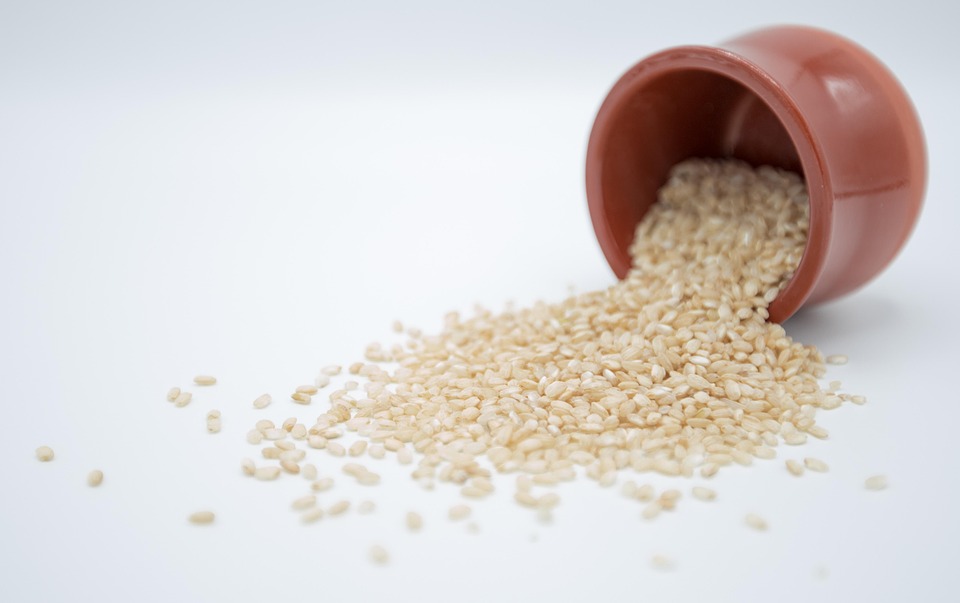Have you ever experienced that uncomfortable burning sensation in your mouth, like you just chomped down on a hot pepper? If so, you’re not alone. Mouth inflammation can be a real pain (literally) and can stem from various causes, including infections, allergies, or even just irritation from certain foods. The good news? There are natural remedies that can help soothe that inflammation quickly. Let’s dive in!
Contents
1. Sage Gargle
You might be surprised to learn that the herb you often see in your Thanksgiving stuffing can actually do wonders for your mouth. Sage has anti-inflammatory and antimicrobial properties that can help reduce swelling and fight off infection.
How to Use It:
- Ingredients: 1 cup of water, 1 tablespoon of dried sage.
- Instructions: Boil the water and steep the sage for about 10 minutes. Once cooled, gargle for 30 seconds and spit it out.
Pros and Cons:
- Pros: Sage is generally safe, easy to find, and has a pleasant taste.
- Cons: Some people may be allergic to sage, so it’s essential to test it out in small amounts first.
Personal Insight:
I’ve tried this remedy after indulging in too much spicy food, and I was pleasantly surprised by how quickly it eased the discomfort.
2. Honey
Ah, honey—the sweet nectar that’s not just for tea. Honey has natural antibacterial and anti-inflammatory properties, making it a fantastic option for soothing mouth inflammation.
How to Use It:
- Direct Application: Take a teaspoon of raw honey and let it dissolve in your mouth. This can coat the inflamed areas and provide relief.
- Honey Tea: Mix honey in warm water or herbal tea for a soothing drink.
Pros and Cons:
- Pros: It’s delicious and can be easily incorporated into your diet.
- Cons: Honey is high in sugar, so moderation is key, especially for those with diabetes.
Personal Insight:
Whenever I feel the first signs of mouth irritation, a spoonful of honey goes a long way in calming things down.
3. Saltwater Rinse
This is an old-school remedy that’s often recommended by dentists. Salt has natural antiseptic properties that can help reduce inflammation and promote healing.
How to Use It:
- Ingredients: 1 cup of warm water, 1 teaspoon of salt.
- Instructions: Dissolve the salt in warm water and gargle for 30 seconds, then spit it out. Repeat 2-3 times a day.
Pros and Cons:
- Pros: This remedy is super easy and inexpensive.
- Cons: Some people may find the taste unpleasant, and overuse can lead to dryness in the mouth.
Personal Insight:
I remember my grandma swearing by this remedy. It may not be the most glamorous, but it gets the job done!
4. Aloe Vera Juice
Aloe vera isn’t just for sunburns; it can also help soothe mouth inflammation. Its soothing properties can reduce irritation while promoting healing.
How to Use It:
- Direct Application: Take a tablespoon of aloe vera juice and swish it around your mouth for about 30 seconds before swallowing or spitting it out.
- Aloe Vera Drink: Mix it with other juices for a refreshing drink.
Pros and Cons:
- Pros: Aloe vera is generally well-tolerated and provides additional health benefits.
- Cons: Some people may experience digestive upset if they consume too much.
Personal Insight:
I often add aloe vera juice to my smoothies. Not only does it taste nice, but it also keeps my mouth feeling fresh.
5. Chamomile Tea
Chamomile isn’t just a bedtime drink; it has anti-inflammatory and calming effects that can help with mouth discomfort.
How to Use It:
- Chamomile Rinse: Brew a strong cup of chamomile tea, let it cool, and use it as a mouth rinse.
- Drinking Chamomile: Enjoy a warm cup to help soothe not just your mouth, but your entire body.
Pros and Cons:
- Pros: It’s widely available and has a calming effect, making it great for stress-related inflammation.
- Cons: Allergies to chamomile are common, particularly for those allergic to ragweed.
Personal Insight:
Whenever I’m feeling stressed and my mouth starts acting up, a warm cup of chamomile works wonders.
FAQs
1. How often should I use these remedies?
You can use most of these remedies 2-3 times a day, but it’s essential to listen to your body. If irritation persists, consult a healthcare provider.
2. Are these remedies safe for everyone?
While many people tolerate these remedies well, it’s crucial to be aware of allergies or sensitivities. Always consult with a healthcare provider if you’re unsure.
3. How long does it take to see results?
Most people experience relief within a few hours, but it can vary based on the individual and the cause of the inflammation.
4. Can I combine these remedies?
Yes, many of these remedies can complement each other. For instance, a sage gargle followed by honey can provide both immediate relief and longer-lasting soothing effects.
Conclusion
Mouth inflammation can be annoying, but it doesn’t have to ruin your day. With these five natural remedies—sage gargle, honey, saltwater rinse, aloe vera juice, and chamomile tea—you can find relief quickly and effectively. Remember, though, that while these remedies can help soothe discomfort, they aren’t a substitute for professional medical advice. If your symptoms persist or worsen, don’t hesitate to reach out to a healthcare provider.
This article is for educational purposes only and is not a substitute for professional medical advice. Always consult a qualified healthcare provider before making changes to your health routine.
References
- Kwon, O. S., & Lee, J. H. (2019). Antimicrobial properties of sage (Salvia officinalis) against oral pathogens. Journal of Ethnopharmacology. https://doi.org/10.1016/j.jep.2019.05.022
- Roshan, N. S., & Mohammadi, A. (2018). The effectiveness of honey on oral health: A review. Journal of Natural Products. https://doi.org/10.1016/j.jnp.2018.01.012
- O’Donnell, J. A., & O’Brien, J. M. (2017). Efficacy of saltwater rinses in promoting healing of oral wounds: A systematic review. American Journal of Dentistry. https://www.amjd.com/article/S0894-8275(17)30212-6/fulltext
Get Your FREE Natural Health Guide!
Subscribe now and receive our exclusive ebook packed with natural health tips, practical wellness advice, and easy lifestyle changes — delivered straight to your inbox.














